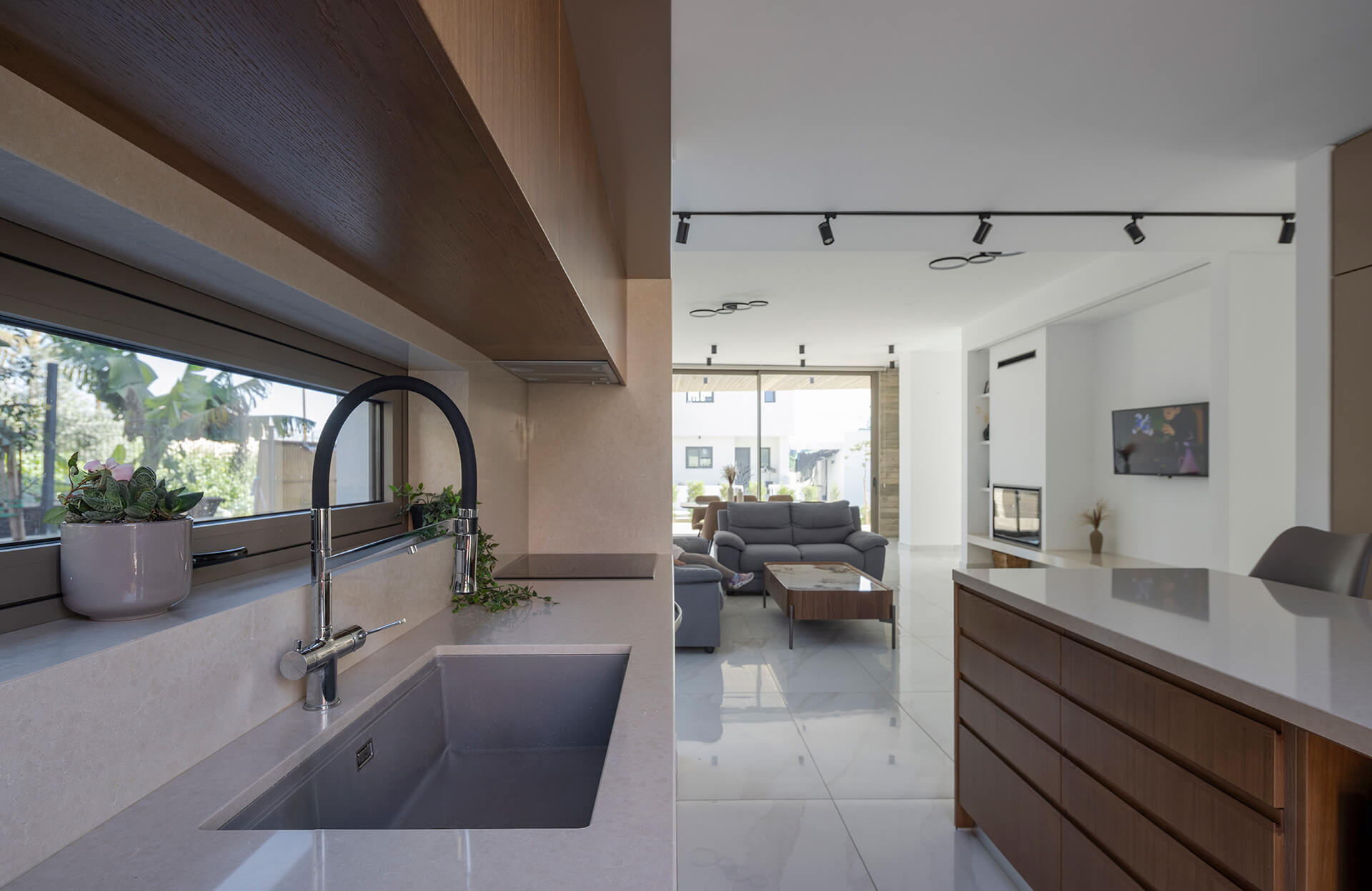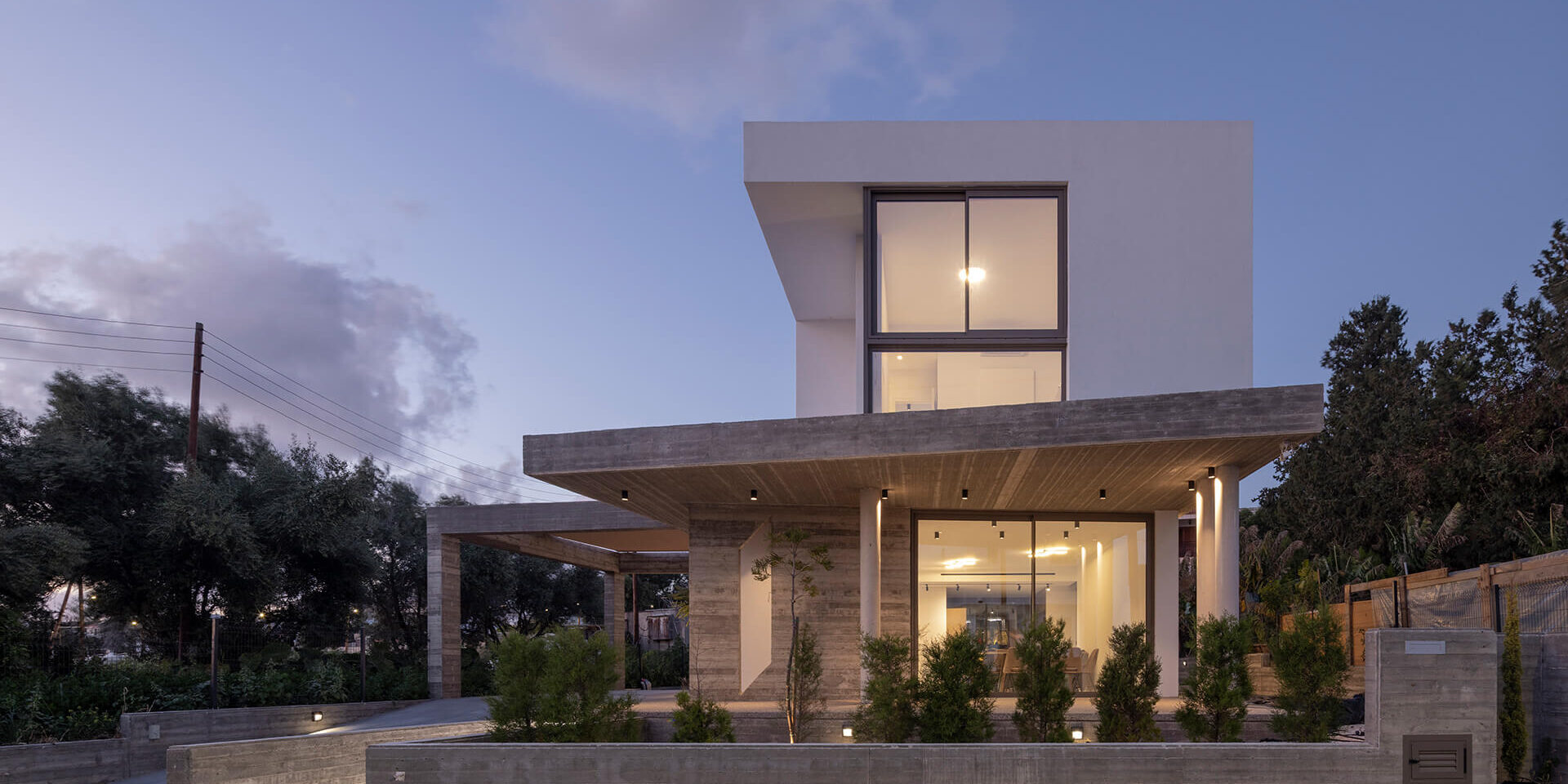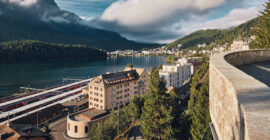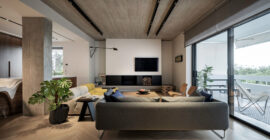Formal clarity
This project explores a balance between formal clarity and the experiential quality of space. It is a single-family residence designed for a family of four, situated on a plot with indistinct boundaries and minimal urban context. The design aspires to create a clean, functional, and well-ventilated shell that uses light, shadow, and geometry as core architectural elements.
Design Philosophy
The plot is elongated along the north-south axis, featuring pronounced elevation changes and a direct adjacency to public green space on its western edge. The composition is shaped by the way the site gradually reveals itself to the visitor, approached along an east-west axis from the street. The house is positioned one meter above street level, recessed into the terrain to create a buffer zone that offers both visual and functional privacy.
The ground floor is organized as a longitudinal rectangle along the north-south axis, articulated into two zones: a wider zone housing the primary living spaces (living room, dining area, kitchen), and a narrower strip accommodating secondary functions such as storage, a study, and vertical circulation. The main entrance is located at the southwest corner and is conceived as a choreographed passage through exposed concrete walls, creating a sense of transition and anticipation.

Spatial Organization
The upper floor includes three bedrooms and two bathrooms, aligned along the north-south axis. Private areas are situated along the eastern façade, while a circulation corridor runs along the west, punctuated by openings to the north and south. This configuration enhances cross-ventilation and mitigates heat gain from the afternoon sun during the summer months.
The architectural expression reaches its peak in the introduction of a single, exposed concrete slab that separates the two floors. Acting as a horizontal datum, this slab delineates programmatic zones while emphasizing the sculptural quality of the design. Extending southward, it forms a covered veranda supported by cylindrical columns. From a distance, the slab appears to make the building float, visually lightening the volume and allowing it to blend subtly with the surrounding landscape.

Sustainability Strategies & Materiality
Natural light and ventilation are maximized through large openings and strategically placed cross-ventilation apertures, which draw in cool air filtered through the adjacent olive trees in the public green space. These passive strategies reduce reliance on mechanical cooling in summer and enhance overall energy performance.
The material palette is intentionally minimal and earthy. Rough-textured white plaster is paired with exposed concrete cast in Swedish timber formwork, establishing a clear visual contrast and a sense of material authenticity. The exposed concrete defines the slab, structural beams, and vertical elements such as retaining walls and the frame of the covered parking area.
Crucially, the natural environment is not treated as separate from the residence, but as an extension of it. The surrounding garden remains uninterrupted, unfolding organically and engaging in dialogue with the adjacent public green space. Outdoor areas are paved with brushed concrete and pebble-finished surfaces, enriching the tactile experience and reinforcing the home’s connection to the Cypriot landscape.






